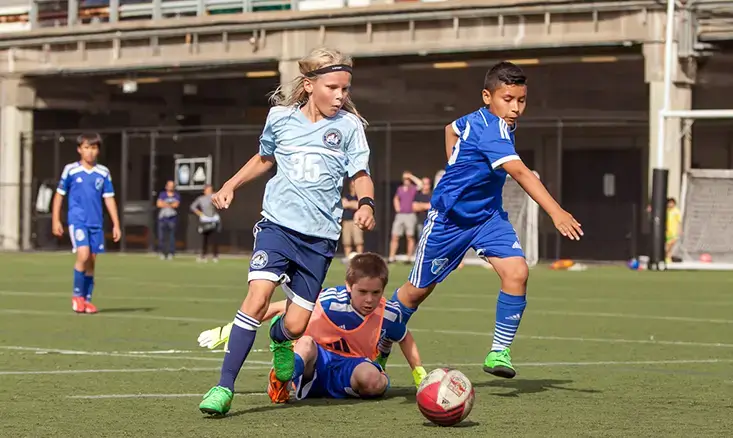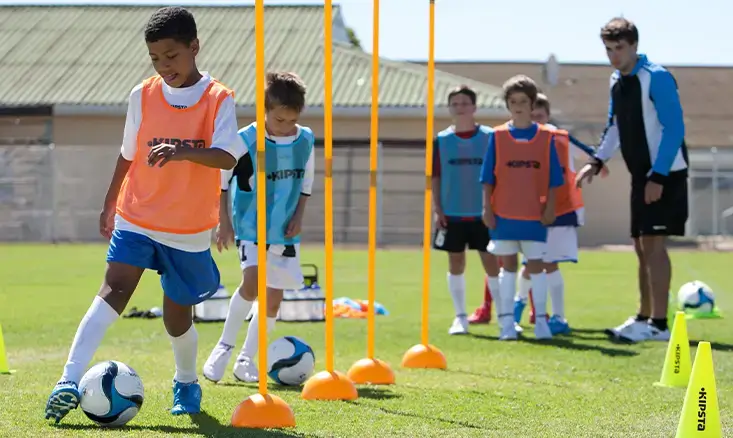CRFC BLOGS
LATEST BLOGS & NEWSLETTERS
Youth Soccer Equipment Rules
Ensuring that young players have the right gear is not only important for performance but also for safety on the field. Whether you’re new to the sport or a seasoned soccer parent, understanding the soccer equipment rules is key to preparing your child for every match. This guide will walk you through the required soccer equipment and outline the basic soccer rules and equipment necessary to participate in youth leagues.
What Are the Equipment Rules in Youth Soccer?
The equipment rules in soccer are designed to ensure that all players are properly equipped for both safety and fair play. Youth soccer leagues follow the same general guidelines as professional soccer, with some modifications to suit the needs of younger players. These rules apply to both games and practices, making it essential for players to be outfitted correctly at all times.

Required Soccer Equipment for Youth Players
Here’s a breakdown of the required soccer equipment that every youth player must have:
- Soccer Jersey
Every player is required to wear a jersey that matches their team’s colors. Jerseys usually come with the player’s number printed on the back. In most leagues, jerseys must also have sleeves, and shirts must be tucked in during play. - Soccer Shorts
Shorts are a mandatory part of the soccer uniform. They should be the same color as the rest of the team’s outfit and should provide ample room for movement. - Shin Guards
One of the most critical pieces of soccer equipment rules is the use of shin guards. These are mandatory for all players to protect their legs from impacts during tackles or collisions. Shin guards should be worn underneath the socks and must be the appropriate size for the player. - Soccer Socks
Soccer socks are worn over shin guards to keep them in place. In youth soccer, socks must fully cover the shin guards and should match the team’s color scheme. - Soccer Cleats
Proper footwear is crucial. Youth players must wear soccer-specific cleats, which provide better traction on the field. Unlike other sports, soccer cleats do not have a front toe stud, as that could pose a safety risk during play. These soccer equipment rules are strictly enforced to prevent injury. - Goalkeeper Equipment
If your child is playing as a goalkeeper, they are required to wear gloves and a unique jersey that distinguishes them from outfield players. Goalkeeper jerseys are typically long-sleeved for extra protection during dives and saves.
Optional Soccer Equipment in Youth Leagues
While the above list covers the required soccer equipment, there are a few optional pieces of equipment that can improve performance or provide extra protection:
- Headgear: Some youth leagues allow players to wear soft headgear to protect against head injuries.
- Mouthguards: Though not required in most youth leagues, mouthguards can offer additional protection, especially for younger players.

Soccer Equipment Rules for Safety
The soccer equipment rules exist primarily to ensure player safety. Here are a few specific guidelines related to safety:
- Jewelry: Players are not allowed to wear any jewelry during matches or practices. This includes necklaces, rings, earrings, and bracelets, as they can cause injury to the player or others.
- Eyeglasses: Players who need vision correction are encouraged to wear sports goggles instead of regular glasses. Regular glasses can break easily and pose a risk on the field.
- Hair Accessories: Any hair accessories like clips or pins should be soft or elastic to avoid injuries.
Importance of Following Soccer Equipment Rules
Adhering to the equipment rules in soccer is vital for several reasons. Firstly, it ensures that all players are dressed uniformly, creating a fair and professional environment. Secondly, and more importantly, it helps minimize injuries on the field. For instance, improperly fitted cleats or missing shin guards can lead to accidents, which is why these items are required in all youth soccer leagues.
What Happens If Equipment Rules Are Not Followed?
If a player is found not adhering to the soccer rules and equipment guidelines, they will not be allowed to participate until the issue is resolved. For example, if a player enters the field without shin guards, the referee will stop the game and ask the player to leave until they are properly equipped. Coaches and parents must ensure that players are wearing the correct gear before each match or practice.
Conclusion
Understanding and following the soccer equipment rules in youth leagues is essential for both player safety and fair play. By ensuring that your child has the required soccer equipment, including shin guards, cleats, and a proper uniform, you can set them up for success on the field. Whether you’re outfitting a beginner or a more advanced player, making sure they are dressed according to the soccer rules and equipment guidelines will help them perform their best and stay safe.
FAQs
What are the essential pieces of equipment for youth soccer?
The essential pieces include a soccer jersey, shorts, shin guards, long socks, and soccer-specific cleats.
Are shin guards required in youth soccer?
Yes, shin guards are mandatory for all players in youth soccer to protect their legs from injuries.
Can my child wear jewelry during a soccer game?
No, players are not allowed to wear any jewelry during matches or practices to prevent injuries.
What type of cleats are allowed in youth soccer?
Players must wear soccer-specific cleats. Cleats with a front toe stud, like those used in baseball or football, are not allowed.
Is headgear required for youth soccer players?
Headgear is optional in most youth leagues but can be worn for additional protection against head injuries.

Did you find this useful?


